Rowell Concepcion, owner of Binata Millinery
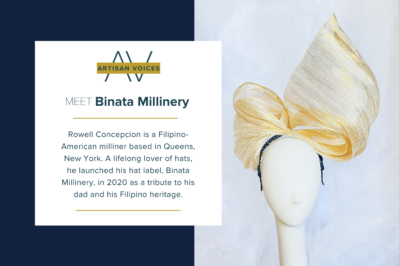
Binata Millinery (@binatamillinery) is a hat label paying homage to old world craftsmanship and techniques. Founded by Rowell Concepcion in 2020, Binata Millinery is inspired by all things playful, quirky, and whimsical. All hats are handmade using traditional millinery techniques and responsibly sourced materials. As a first generation Filipino American, Rowell’s mission is to establish a millinery studio in New York, while teaching, training, and employing artisans in his parents’ native Philippines.
Here, Rowell discusses the craft of millinery, paying homage to his Filipino heritage, and his creative process.
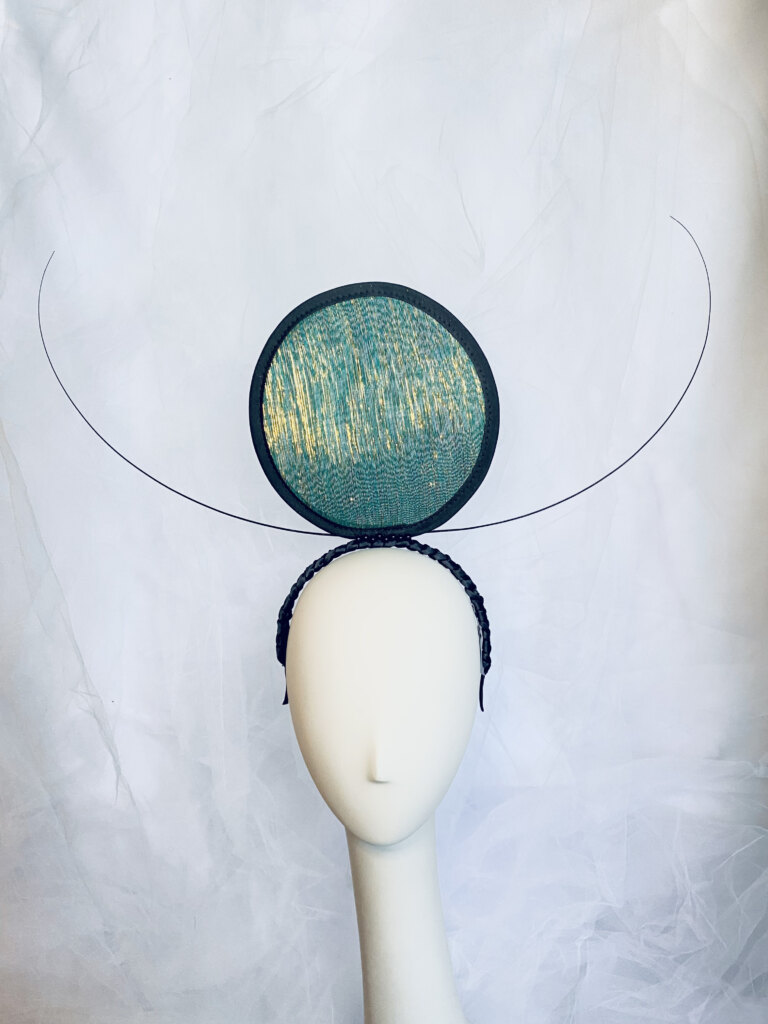
What’s an iconic hat moment for you?
Everything I am working towards is starting to come to life. One of my dreams just came true – Lady Gaga’s team reached out last August for me to make a custom headpiece for her Las Vegas residency. The request came in while it was my first time showing at NY NOW. I was severely pressed for time, but I stayed up a few nights to get it all done. I’m glad it all worked out, because it is an iconic moment for my millinery, and I’m optimistic that there is more to come.
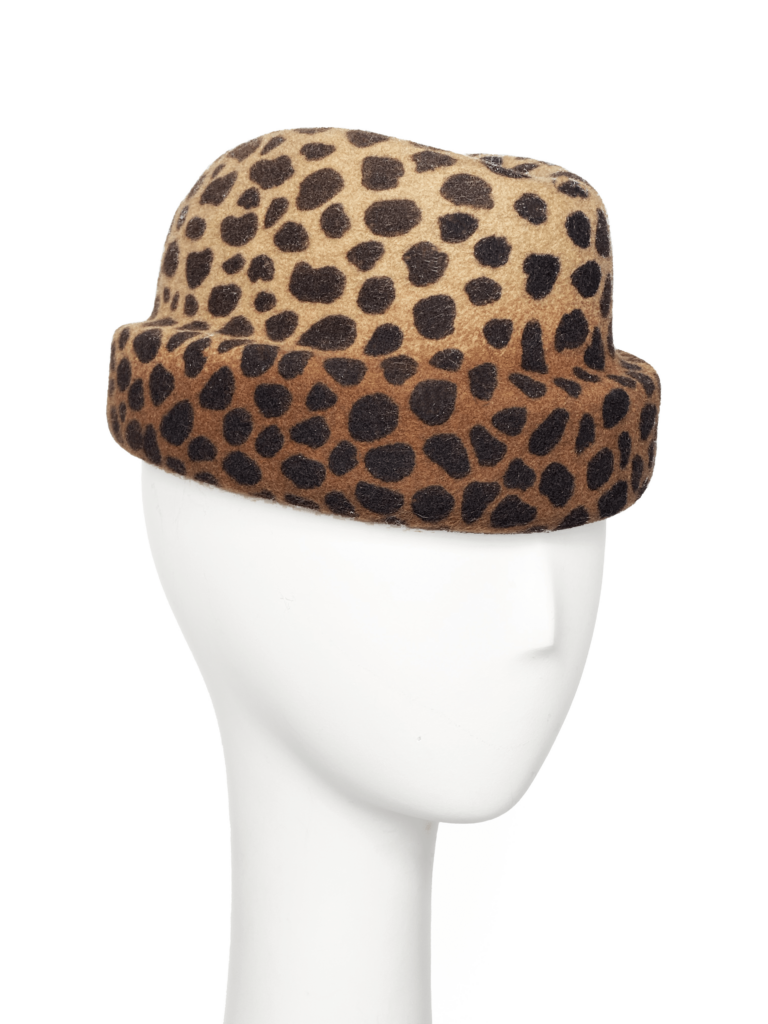
Leopard print crew cuff
What does your creative process look like? Do you start by sketching?
I look for inspiration from everywhere around me. I then start by creating a mood board and gathering fabric swatches. I love looking at WGSN, Pantone, and WWD for color trends. I usually sketch 6-10 hats and see what works. I re-sketch the silhouettes I want to move forward with until I have around 8 that I’m 100% on creating. And then I make the hat samples. What I love working with my hands is that I get to change and revise as I go. It’s very much an of the moment process when I block, trim, and finish a hat.
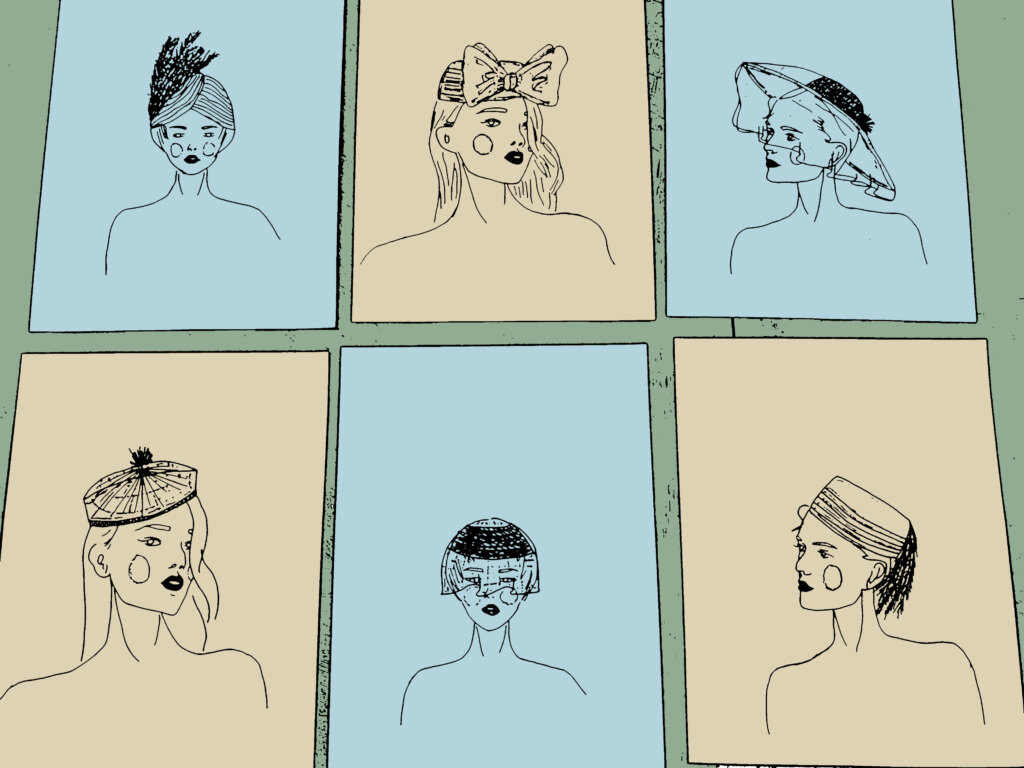
Tell me about the beginnings of your business. How did your interest in hats evolve into a business?
I firmly believe people fall into two categories: people who love accessories and those who don’t. I will forever be an accessories person.
I originally studied merchandising at FIT, but as I found my confidence to get into the design world, I started taking accessories design courses. After my first millinery class, I knew, then and there, this was my calling. Not only was it something I loved, but it also turned out I was a natural at it. So, I started thinking about a plan to launch my very own millinery label.
When the pandemic started, both my mom and dad landed in the hospital. My mom made it through, but my dad, heartbreakingly, did not. I figured life is too short, and I should make the most of what I was put on this earth to do. My parents always wanted me and my brothers to create businesses to help our community, and millinery is perfect. The Philippines is rich in straws and fibers used in hat making, so after the passing of my dad from COVID, I officially launched my brand in August 2020 as a tribute to him and a nod to my heritage. That is why I made it my mission to be able to foster jobs in my mom and dad’s home provinces.
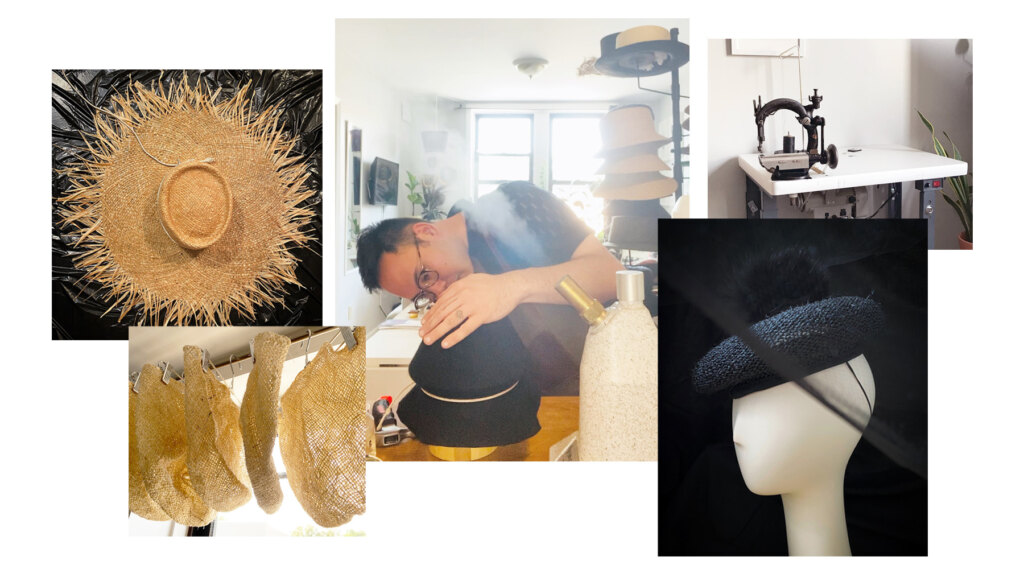
Your hats are all handmade. When it comes to making a hat, how much work goes into making a hat?
My customers are fashion forward individuals who value design, quality, and art. What I love most about handmade hats is that each piece is crafted with the utmost care and attention. The process requires water, steam, a keen eye to detail, and a lot of strength. Every blocked hat at my studio is a 2-day minimum process – sometimes 3 depending on the humidity and weather. I block felts and straws on vintage hat blocks acquired from all over the world, and each hat dries overnight. The longer the material stays on the block, the better.
My best-sellers for everyday wear, on average, take 2-3 hours to complete from start to finish – not counting the time to dry. The pieces most hat lovers come to me for include my pillboxes, crew cuff hat, and asymmetrical caps. For sustainability practices, every piece is made-to-order, and I offer custom colors for each style. For special and custom millinery, the process can take anywhere from 10-15 to 20+ hours. One of my favorite hats I’ve made was a buckram pillbox covered with duchess silk satin and hand sewn pearls all over. Sewing the pearls alone took 30 hours to accomplish. Every hat and headpiece is a labor of love, and I wouldn’t have it any other way.
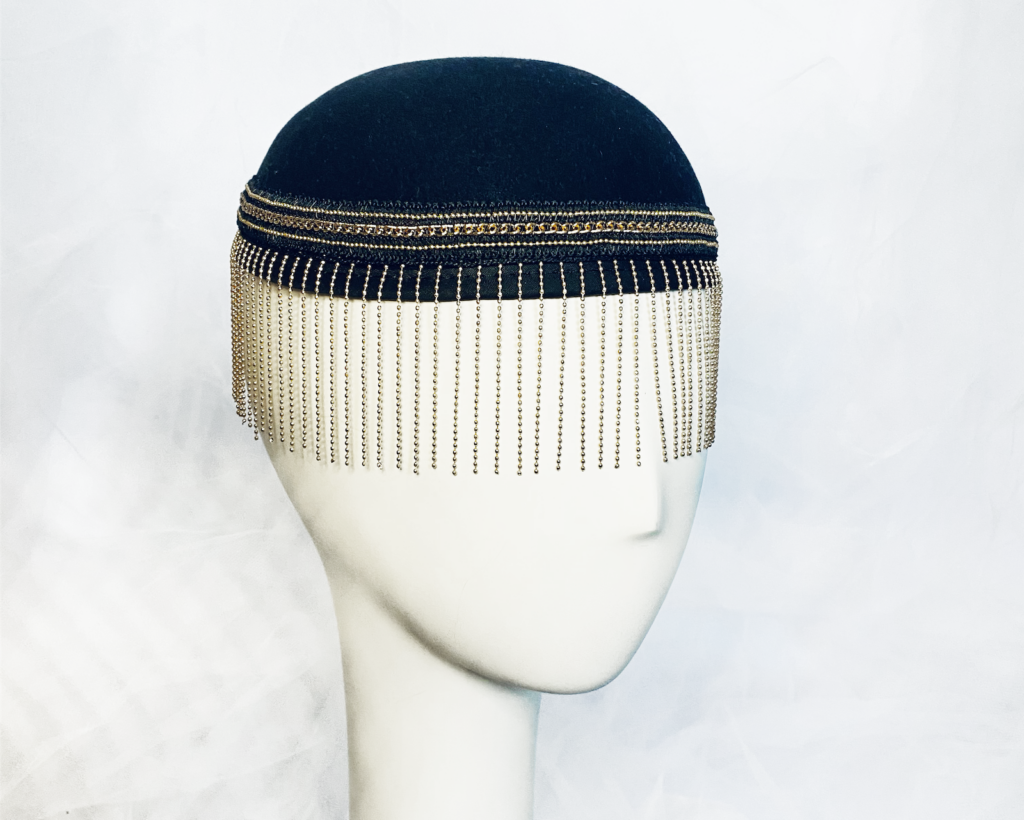
What is a memorable project that you worked on? Can you share that story?
I do a lot of custom bridal hats and veils. The most memorable is a recent one. The bride wanted a fingertip length veil, but hoped for an element of her mom’s wedding dress from the 80s. The gown was stunning. You could tell it had elements from Princess Diana’s style. I was immediately obsessed. The train was long and had beautiful lace sewn on, and after some collaboration, we agreed on a veil using the lace from her mom’s train. It had the tiniest stitches and took 20 hours to unstitch, 2 days to clean, and 25 hours to hand sew onto the beautiful tulle. It’s gratifying to be part of anyone’s special day, but the best part – the bride was beyond ecstatic about how perfect it turned out. There was some excess lace from her mom’s gown, which I suggested they keep so her little brother could use it for a barong (traditional men’s Filipino garment for special occasions) in the future.
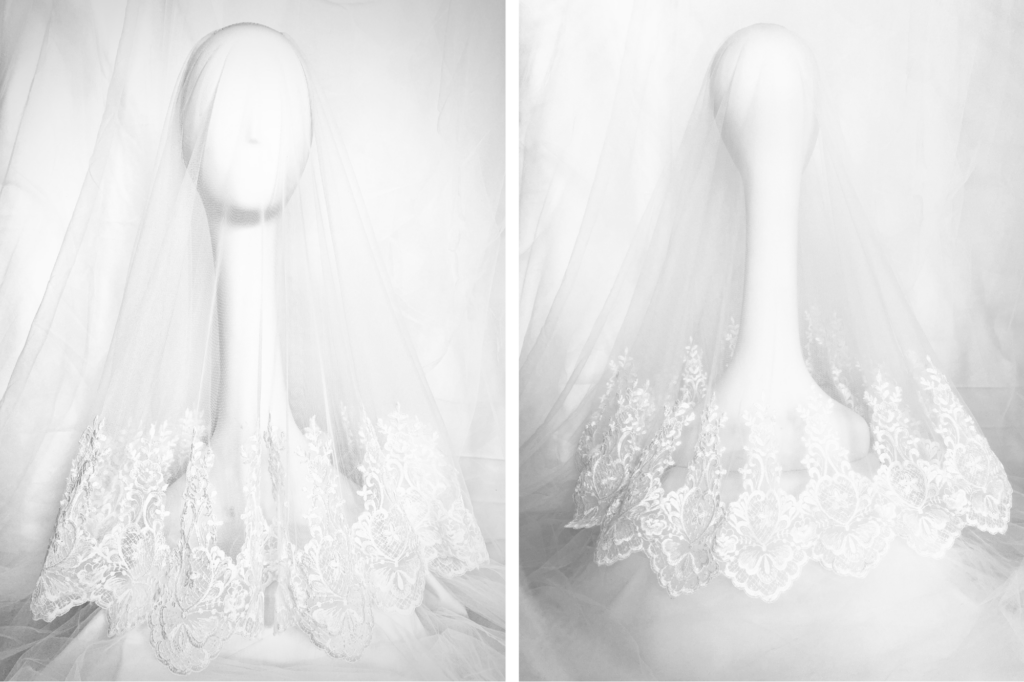
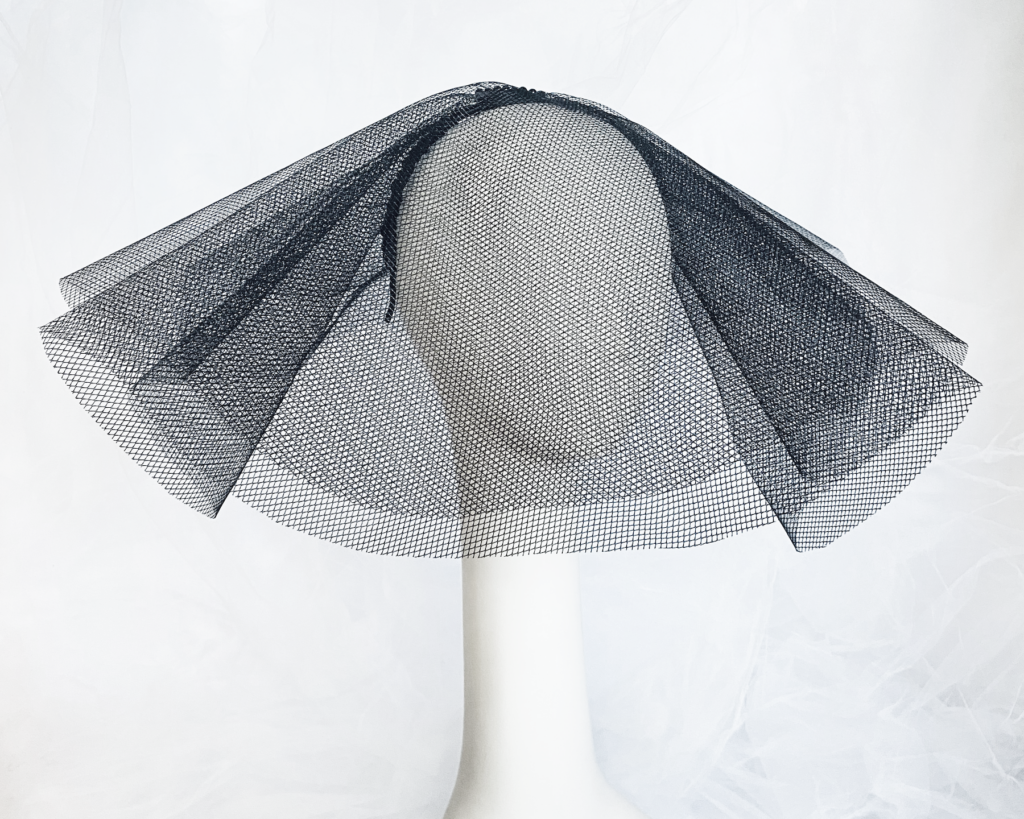
Looking ahead, what are your goals for your business in the coming years?
I have many goals in the coming years. Here are a few I am working to manifest: First on the list is to get more of my hats in motion, specifically in film and tv. Please keep your eyes peeled on the silver screen. Second, I am looking to smooth out my production so that I can work with more retailers. My plan is to diversify my business so it is two-thirds DTC and one-third wholesale. And third, I am designing more special pieces using piña fabric from The Philippines.
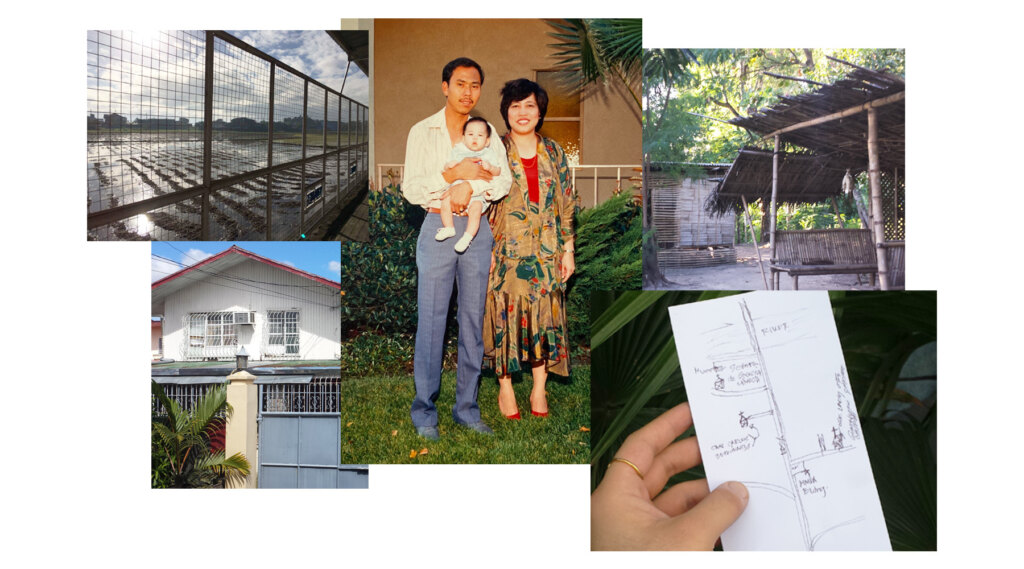
Tell me about the community of artisans you’re working with in the Philippines
I am thrilled that I got to travel to the Philippines in March to start on my mission. I stayed in the Rizal province for two weeks in search of artisans to get the ball rolling. I drove around and walked from town to town talking with locals to find anyone who would have interest in working with me. I found a few people who believed in what I am doing and got to work on some spring and resort hat samples using local materials – pandan, sinamay, and abaca. It was wonderful to be able to show my processes. Keep your eyes peeled for SS24. I am currently working with artisans around the Rizal province to develop hats made with piña (pineapple) fabrics that are also used to make Barongs and Maria Clara styles (Filipino national wear).
My mom and dad invested in a water bottling company in Rizal in the past. They now employ a team of 10-15 and pay more than fair wages with full benefits. I got to see how happy the employees are and that they are creating a better life for people where they grew up. I want to do the same.

To learn more about Binata Millinery, check out the links below.
WEBSITE
Binata Millinery
SOCIAL MEDIA
All photos courtesy of Binata Millinery.
The Artisan Voices blog explores the histories, experiences, pivotal moments, and innovative initiatives in an artisan or maker business while celebrating craft, community, and culture.